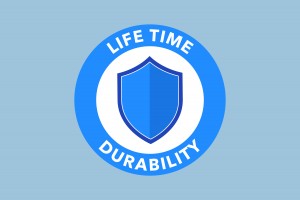Microfiber sheets versus cotton sheets, which one is better? At COMPARE.EDU.VN, we break down the differences between microfiber and cotton sheets to help you choose the best option for your sleep needs. This comparison explores feel, durability, maintenance, price, and environmental impact, providing a detailed analysis for a well-informed decision. Discover the ideal choice for your bedding needs with our comprehensive comparison guide, ensuring you select the perfect sheets for optimal comfort and value, covering aspects like breathability, softness, and longevity.
1. What Are Microfiber Sheets?
Microfiber sheets are crafted from extremely fine synthetic fibers, usually polyester or nylon polymers, resulting in a lightweight, soft, and budget-friendly bedding option. The fineness of the fibers, measured in denier (less than 1 denier), contributes to the fabric’s smooth texture and tightly woven structure, making it a popular choice for those seeking comfort and affordability.
Microfiber sheets offer several advantages and disadvantages that influence their suitability for different sleepers:
- Advantages:
- Cost-effective: Microfiber sheets are generally more affordable than cotton sheets, making them an attractive option for budget-conscious shoppers.
- Softness: The fine fibers create a smooth and soft feel against the skin, enhancing sleep comfort.
- Durability: Tightly woven microfiber sheets are less prone to wear and tear, maintaining their quality over time.
- Wrinkle Resistance: Microfiber resists wrinkling, offering a neat and tidy appearance without the need for ironing.
- Disadvantages:
- Breathability: Microfiber is less breathable than natural fibers like cotton, potentially trapping heat and causing discomfort for hot sleepers.
- Moisture Absorption: These sheets are not highly absorbent, which can lead to a damp feeling if you sweat during the night.
- Static Electricity: Microfiber tends to generate static electricity, which can be annoying, especially in dry environments.
- Environmental Impact: As a synthetic material, microfiber production involves processes that may have a larger environmental footprint compared to natural fibers.
Understanding these pros and cons can help you determine whether microfiber sheets align with your specific needs and preferences.
2. What are Cotton Sheets?
Cotton sheets are made from natural cotton fibers, known for their breathability, softness, and durability, making them a popular choice for bedding. These sheets offer a comfortable sleep experience due to their ability to wick away moisture and allow air circulation, keeping you cool throughout the night.
Cotton sheets come in various types, each offering a unique combination of comfort, durability, and price. Here are some of the most common types:
- Egyptian Cotton: Known for its long, fine fibers, Egyptian cotton is incredibly soft, durable, and luxurious, making it a top-tier choice for bedding. Its superior quality comes at a higher price point, but many find the investment worthwhile for the ultimate in comfort.
- Pima Cotton (Supima): Similar to Egyptian cotton, Pima cotton also features long fibers that contribute to its softness and strength. Supima is a trademarked type of Pima cotton grown in the United States, ensuring high standards of quality.
- Upland Cotton: This is the most common and affordable type of cotton used for sheets. While not as soft or durable as Egyptian or Pima cotton, Upland cotton sheets are still a good option for everyday use.
- Organic Cotton: Grown without synthetic pesticides or fertilizers, organic cotton is an environmentally friendly choice for those concerned about the impact of their purchases. Organic cotton sheets are often softer and more breathable than conventional cotton sheets.
- Cotton Blends: Cotton is often blended with other fibers like polyester to create sheets that are more affordable, wrinkle-resistant, and durable. These blends offer a balance of benefits but may not have the same level of softness and breathability as 100% cotton sheets.
When shopping for cotton sheets, it’s essential to consider the type of cotton used, as it significantly affects the overall quality and feel of the bedding.
3. Feel and Comfort: Which Sheet Type Feels Best?
The feel and comfort of bed sheets significantly impact the quality of your sleep. Both microfiber and cotton offer unique sensations, catering to different preferences.
- Cotton: Cotton is known for its breathability and natural feel. High-quality cotton, like Egyptian or Pima, offers a smooth and soft texture that becomes more comfortable with each wash. Cotton’s breathability allows air to circulate, preventing overheating and keeping you cool throughout the night.
- Microfiber: Microfiber sheets have a silky, smooth feel, often compared to satin. This texture is achieved through the tightly woven, fine synthetic fibers. While microfiber can be soft to the touch, it tends to trap heat more than cotton, which may not be ideal for those who sleep hot.
Here’s a breakdown in table format:
| Feature | Cotton | Microfiber |
|---|---|---|
| Texture | Natural, breathable, gets softer with washing | Silky, smooth, often compared to satin |
| Breathability | High; allows air circulation, prevents overheating | Lower; tends to trap heat |
| Ideal for | Hot sleepers, those preferring a natural feel | Those who prefer a silky texture and sleep in cooler environments |





Ultimately, the choice depends on personal preference. If you prioritize breathability and a natural feel, cotton is a better option. If you enjoy a silky texture and tend to sleep cool, microfiber might be more appealing.
4. Durability: Which Sheets Last Longer?
When investing in bed sheets, durability is a crucial factor. The lifespan of your sheets depends on the material, weave, and how well you care for them.
- Cotton: The durability of cotton sheets varies based on the type of cotton and thread count. Higher thread counts (typically between 200 and 600) generally indicate a more durable and long-lasting sheet. High-quality cotton like Egyptian or Pima is less likely to pill or wear out quickly, maintaining its softness and integrity over time.
- Microfiber: Microfiber sheets are known for their resistance to wear and tear due to their tightly woven synthetic fibers. They are less prone to pilling and shrinking compared to cotton. However, the overall lifespan of microfiber sheets can be shorter than high-quality cotton, as the synthetic fibers may break down with repeated washing and use.
Here’s a detailed comparison:
| Feature | Cotton | Microfiber |
|---|---|---|
| Longevity | High-quality cotton lasts longer with proper care | Durable but may break down faster than high-quality cotton |
| Pilling | Less likely with high-quality, higher thread count cotton | Highly resistant to pilling |
| Shrinking | More prone to shrinking, especially with hot water washing | Less prone to shrinking |
| Best for | Those who invest in high-quality sheets and maintain them well | Those seeking a durable, low-maintenance option |
For longevity, investing in high-quality cotton sheets and following care instructions is key. If you prefer a more budget-friendly option that still offers good durability, microfiber can be a practical choice.
5. Maintenance: How Easy Are They to Care For?
The ease of care is an important consideration when choosing between microfiber and cotton sheets. Both materials have different maintenance requirements that can impact your daily routine.
- Cotton: Cotton sheets are generally easy to care for, as they can be machine washed and dried. However, they are more prone to wrinkling, so ironing may be necessary to maintain a crisp appearance. Cotton can also shrink, especially when washed in hot water.
- Microfiber: Microfiber sheets are known for their low-maintenance properties. They are wrinkle-resistant, quick-drying, and less likely to shrink compared to cotton. Microfiber is also less absorbent, which means it can be easier to remove stains. However, it’s important to avoid using high heat when washing or drying microfiber, as this can damage the synthetic fibers.
Here’s a quick comparison:
| Feature | Cotton | Microfiber |
|---|---|---|
| Washing | Machine washable, may require ironing | Machine washable, wrinkle-resistant |
| Drying | Can shrink, especially with high heat | Quick-drying, less likely to shrink |
| Stain Removal | May require more effort to remove stains | Easier to remove stains |
| Special Needs | Requires careful washing to prevent shrinking and wrinkling | Avoid high heat to prevent damage to fibers |
Microfiber sheets are the better choice for those seeking a hassle-free option. Cotton sheets require a bit more attention but offer a natural feel that many prefer.
6. Price: Which Sheets Offer the Best Value?
Price is a significant factor for many when choosing bed sheets. Microfiber and cotton sheets vary widely in cost, depending on the quality, brand, and construction.
- Cotton: Cotton sheets range in price, with basic Upland cotton being more affordable and premium options like Egyptian and Pima cotton costing significantly more. High thread counts and organic certifications also increase the price.
- Microfiber: Microfiber sheets are generally more budget-friendly than cotton sheets. Their synthetic composition and lower production costs make them an accessible option for those looking to save money. While there are higher-end microfiber options, they are typically less expensive than comparable cotton sheets.
Here’s a detailed price comparison:
| Feature | Cotton | Microfiber |
|---|---|---|
| Price Range | $30 – $200+ (depending on quality and type) | $20 – $100 (generally more affordable) |
| Value | High-quality cotton offers long-term value due to durability and comfort | Good short-term value due to lower upfront cost |
| Best for | Those willing to invest in luxury and longevity | Budget-conscious shoppers seeking affordability |
Consider your budget and long-term needs to determine the best value. Microfiber offers an economical choice, while cotton provides long-term benefits with higher-quality options.
7. Environmental Impact: Which Sheets Are More Eco-Friendly?
The environmental impact of bed sheets is an increasing concern for many consumers. Cotton and microfiber have different environmental footprints due to their materials and production processes.
- Cotton: Conventional cotton farming can involve heavy pesticide use and significant water consumption, leading to environmental degradation. However, organic cotton is grown without synthetic pesticides and fertilizers, making it a more sustainable option. Look for certifications like the Global Organic Textile Standard (GOTS) to ensure the cotton is truly organic.
- Microfiber: Microfiber is a synthetic material made from petroleum-based products, which are non-renewable resources. The production of microfiber also requires energy and can release pollutants into the environment. Additionally, microfiber sheds tiny plastic particles (microplastics) during washing, which can end up in waterways and harm aquatic life.
Here’s a comparison of their environmental impact:
| Feature | Cotton | Microfiber |
|---|---|---|
| Sustainability | Organic cotton is more sustainable; conventional cotton has environmental issues | Synthetic material from non-renewable resources |
| Production Impact | High water and pesticide use in conventional cotton farming | Energy-intensive production, potential for pollution |
| Microplastics | Does not produce microplastics | Sheds microplastics during washing, which can pollute waterways |
| Eco-Friendliness | Organic cotton is an eco-friendly choice | Less eco-friendly due to synthetic materials and microplastic shedding |
If you prioritize environmental sustainability, organic cotton is the more responsible choice. Microfiber has a larger environmental footprint due to its synthetic nature and potential for microplastic pollution.
8. Thread Count vs. Denier: What Do These Terms Mean?
Understanding thread count for cotton sheets and denier for microfiber sheets can help you make an informed decision.
- Thread Count (Cotton): Thread count refers to the number of horizontal and vertical threads per square inch of fabric. Higher thread counts generally indicate softer and more durable sheets, but this isn’t always the case. Sheets with thread counts between 200 and 600 are usually a good balance of comfort and durability.
- Denier (Microfiber): Denier measures the linear mass density of fibers. In simpler terms, it indicates the thickness of individual fibers. Microfiber has a denier of less than one, meaning the fibers are incredibly fine. Lower denier values indicate softer and more pliable fabrics.
Here’s a comparative summary:
| Feature | Thread Count (Cotton) | Denier (Microfiber) |
|---|---|---|
| Definition | Number of threads per square inch | Thickness of individual fibers |
| Impact | Higher count usually means softer and more durable (up to a point) | Lower denier means softer and more pliable |
| Ideal Range | 200-600 for a good balance of comfort and durability | Microfiber is defined as having a denier less than one |
While thread count and denier can provide insights into the quality of sheets, they should be considered alongside other factors like the type of cotton or synthetic material used.
9. Best Uses for Cotton Sheets
Cotton sheets are versatile and suitable for various uses, thanks to their breathability and comfort.
- Hot Sleepers: Cotton’s breathability makes it ideal for those who tend to overheat during the night. The fabric allows air to circulate, wicking away moisture and keeping you cool.
- Sensitive Skin: High-quality cotton sheets are gentle on sensitive skin, reducing the risk of irritation. Organic cotton is particularly beneficial for those with allergies or skin conditions.
- Year-Round Comfort: Cotton sheets provide comfort in all seasons. They keep you cool in the summer and can be layered with blankets for warmth in the winter.
- Everyday Use: Durable and easy to care for, cotton sheets are perfect for everyday use in guest rooms.
Cotton sheets are a reliable choice for anyone seeking comfort, breathability, and versatility.
10. Best Uses for Microfiber Sheets
Microfiber sheets also have their strengths and are particularly well-suited for certain situations.
- Budget-Conscious Shoppers: Microfiber sheets are an affordable option for those looking to save money without sacrificing comfort.
- Easy Care: Wrinkle-resistant and quick-drying, microfiber sheets are perfect for busy individuals who want low-maintenance bedding.
- Cooler Climates: Microfiber’s heat-trapping properties can be an advantage in cooler climates, providing extra warmth during the night.
- Guest Rooms: Durable and stain-resistant, microfiber sheets are a practical choice for guest rooms that may not be used frequently.
Microfiber sheets offer a budget-friendly and convenient option, particularly for those seeking easy care and added warmth.
11. How Often Should You Replace Your Sheets?
Regardless of whether you choose cotton or microfiber, knowing when to replace your sheets is essential for maintaining good hygiene and comfort.
- General Guideline: As a general rule, you should replace your bed sheets every 1-2 years.
- Signs of Wear: Look for signs of wear and tear, such as thinning, discoloration, pilling, or fading.
- Hygiene: Regular washing helps remove dirt, oil, and allergens, but over time, these can build up and affect the quality of your sleep.
- Personal Preference: If your sheets no longer feel comfortable or supportive, it’s time for a replacement.
Investing in new sheets regularly ensures you enjoy a clean, comfortable, and healthy sleep environment.
12. Other Types of Sheets to Consider
Besides cotton and microfiber, other types of sheets offer unique benefits:
- Linen: Linen sheets are known for their breathability, durability, and natural texture. They are a great option for hot sleepers and become softer with each wash.
- Silk: Silk sheets are luxurious and gentle on the skin, reducing friction and preventing wrinkles. They are also hypoallergenic and temperature-regulating.
- Bamboo: Bamboo sheets are soft, breathable, and eco-friendly. They are also moisture-wicking and antimicrobial.
Exploring different sheet types can help you find the perfect fit for your individual needs and preferences.
13. FAQs
1. What cotton thread count is best?
A thread count between 200 and 600 is generally considered ideal for cotton sheets. This range provides a good balance of softness, durability, and breathability.
2. Do hotels use cotton or microfiber sheets?
Many hotels use a blend of cotton and polyester sheets to balance cost, durability, and comfort. High-end hotels often use 100% cotton sheets for a luxurious feel.
3. How often should you replace your bed sheets?
You should replace your bed sheets every 1-2 years, or sooner if you notice signs of wear and tear or reduced comfort.
4. How many sets of bed sheets should you own?
It’s recommended to own at least two to three sets of bed sheets per bed. This allows you to rotate them while one set is being washed.
5. What is the best material for sheets to keep you cool?
Cotton, linen, and bamboo sheets are excellent choices for keeping you cool during the night due to their breathability and moisture-wicking properties.
6. Are microfiber sheets good for allergies?
Microfiber sheets can be a good option for allergy sufferers because their tight weave prevents dust mites from penetrating the fabric.
7. Can I use bleach on cotton sheets?
You can use bleach on white cotton sheets, but it’s best to avoid using bleach on colored sheets, as it can cause fading.
8. How do I care for organic cotton sheets?
Wash organic cotton sheets in cold water with a gentle detergent and avoid using bleach or fabric softeners. Tumble dry on low or hang to dry.
9. What are the benefits of sateen sheets?
Sateen sheets have a silky-smooth feel and a subtle sheen, making them a luxurious and comfortable option.
10. Are microfiber sheets prone to static electricity?
Yes, microfiber sheets are prone to static electricity, especially in dry environments. Using a fabric softener or dryer sheet can help reduce static.
Conclusion
Choosing between microfiber and cotton sheets depends on your priorities. Microfiber offers affordability and easy care, while cotton provides breathability and a natural feel. Consider your budget, sleeping habits, and environmental concerns to make the best decision. Remember, COMPARE.EDU.VN is here to provide detailed comparisons and help you make informed choices for all your bedding needs.
Want to make the best choice for your sleep? Visit COMPARE.EDU.VN for more in-depth comparisons and reviews. Our comprehensive guides cover a wide range of products and services, helping you make confident decisions. Don’t settle for less – discover the best options for your needs today!
Address: 333 Comparison Plaza, Choice City, CA 90210, United States.
Whatsapp: +1 (626) 555-9090.
Website: compare.edu.vn